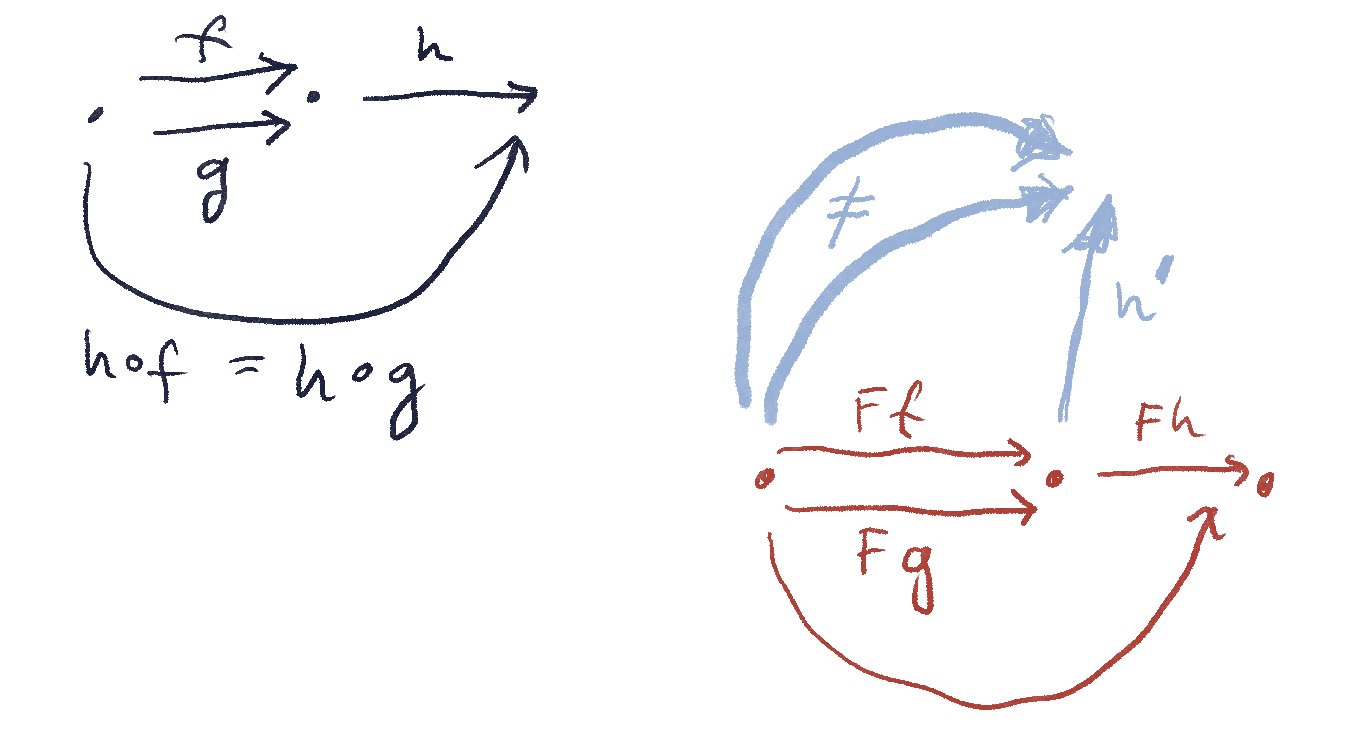Bartosz Milewski on Nostr: Stupid math question: In one of my blogs I claimed that if there are two parallel ...
Stupid math question: In one of my blogs I claimed that if there are two parallel morphism f and g, whose composites on both left and right are always equal, that there is no way to distinguish between them, in THAT category. But you can always use a functor to a larger category, in which their images can compose differently, giving rise to different buidups of composites. (Below is an example of a 3-object category and its functorial mapping.)
Does it make sense? Is there a formal way of saying that two different morphisms are indistinguishable in a particular category? Are morphisms distinguishable if their sieves are not isomorphic?

Published at
2025-04-23 10:12:27Event JSON
{
"id": "e475cf3319a9e6b2a582535900b84b1c61287e04827641b332b9493625bf34e2",
"pubkey": "a60a88374d8e1cf092c7ea93662aa784fb33b3e75be7725017032e6929ebc5d5",
"created_at": 1745403147,
"kind": 1,
"tags": [
[
"imeta",
"url https://media.mathstodon.xyz/media_attachments/files/114/386/720/076/270/361/original/3c7f4b6d62a91fee.png",
"m image/png",
"dim 1357x755",
"blurhash U2S?DWyC%K8|59DhoIXn_3RQR+xu^ib{Rl$}"
],
[
"proxy",
"https://mathstodon.xyz/users/BartoszMilewski/statuses/114386740650392901",
"activitypub"
],
[
"client",
"Mostr",
"31990:6be38f8c63df7dbf84db7ec4a6e6fbbd8d19dca3b980efad18585c46f04b26f9:mostr",
"wss://relay.mostr.pub"
]
],
"content": "Stupid math question: In one of my blogs I claimed that if there are two parallel morphism f and g, whose composites on both left and right are always equal, that there is no way to distinguish between them, in THAT category. But you can always use a functor to a larger category, in which their images can compose differently, giving rise to different buidups of composites. (Below is an example of a 3-object category and its functorial mapping.)\n\nDoes it make sense? Is there a formal way of saying that two different morphisms are indistinguishable in a particular category? Are morphisms distinguishable if their sieves are not isomorphic?\n\nhttps://media.mathstodon.xyz/media_attachments/files/114/386/720/076/270/361/original/3c7f4b6d62a91fee.png",
"sig": "5d5043d3f42d41b8d651094ed97a419857da47db397a5fe78b247c3121e04fd06a23ca70d3dd92a34ac1ef45b91744d89242816f2a08402b8140a87731761edd"
}

